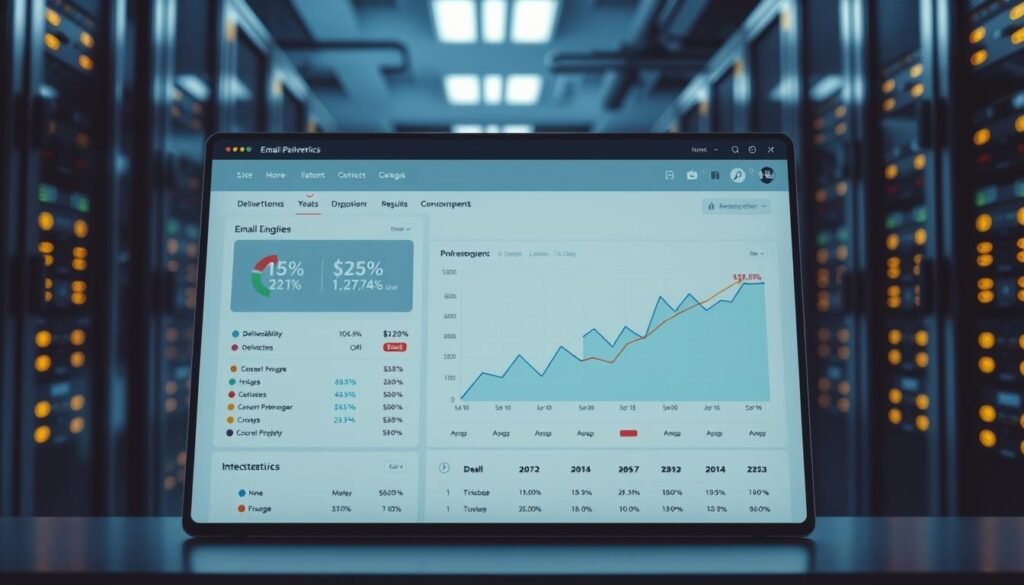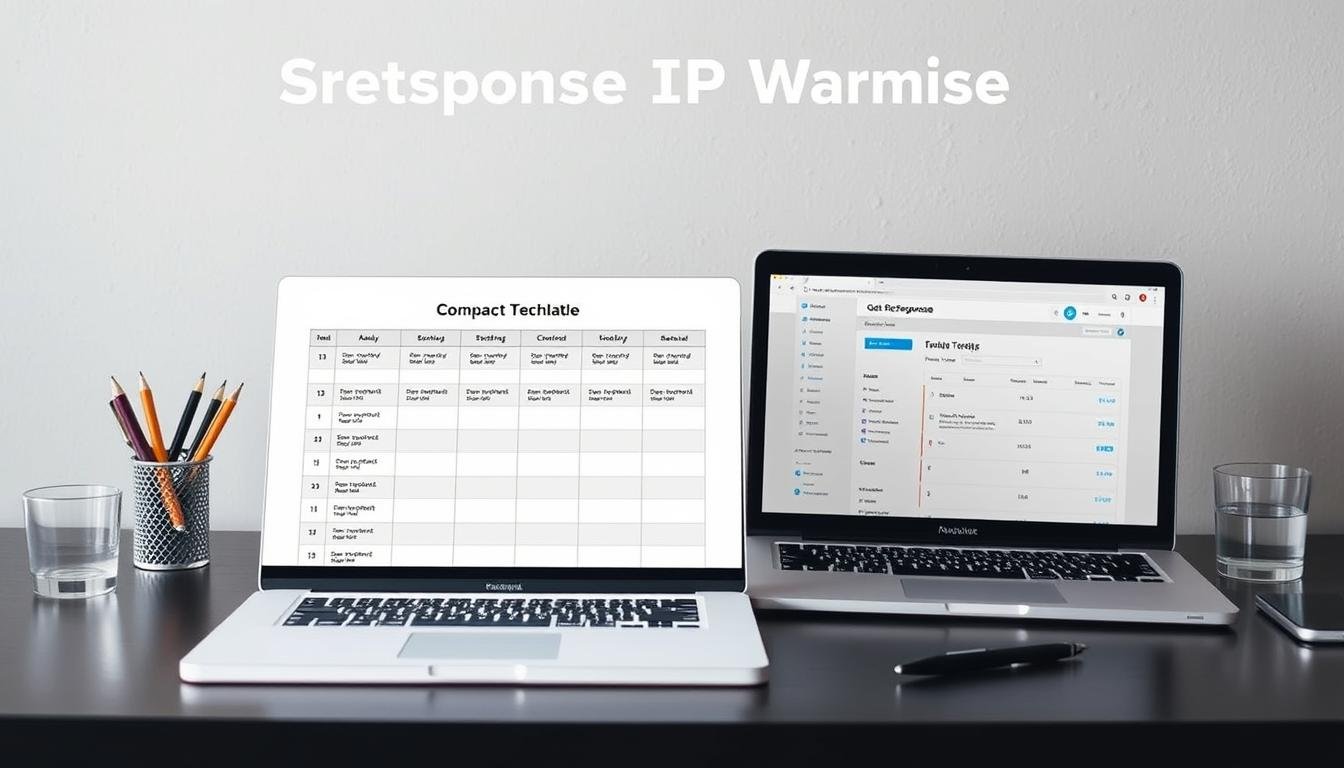This short guide helps you build a predictable ramp that improves email deliverability and teaches internet service providers who you are as a sender over time.
Start with an engaged core: prioritize recent openers and clickers so early sends earn positive signals for your domain and address.
Begin with low volume and increase steadily. Consistency lets filters model normal behavior and reduces risk. Throttle campaigns across several hours at first to avoid rate limits at Yahoo and follow Google’s guidance to send slowly.
Make sure authentication, campaign cadence, and monitoring are in place before day one. Most reputation systems store data for 30 days, so avoid long gaps that force a full re-warm.
Treat this as a living plan. Adjust by provider, segment, and performance. For senders above 50,000 messages per month, consider a dedicated sending identity. Document steps and rollback thresholds so you can repeat domain warming with confidence.
Key Takeaways
- Seed warmup with engaged customers to build early momentum.
- Start conservatively, add volume daily, and throttle sends over hours.
- Align authentication, sender address, and campaign cadence before sending.
- Monitor ISP-level performance and keep a 30-day activity window.
- Adjust the plan by provider and segment; document each step for repeatability.
Why Warming Up Your IP and Domain Is Essential for Email Deliverability
New sending identities start with no standing, so you must build predictable trust. Internet service providers identify you by address and track sending behavior to assign a reputation that drives inbox placement.
How reputation shapes inbox placement with major providers
Major providers use domain and IP signals to route your messages to inbox, promotions, or spam. They watch volume patterns, complaint rates, and delivery metrics.
Consistency matters: steady per-provider activity beats rotating days. Reputation data often fades after ~30 days, so keep a sending heartbeat.
Positive engagement signals ISPs use to evaluate new senders
Engagement is evidence. Opens, clicks, scrolling depth, folder moves, and replies show your content is wanted.
- Seed early sends to your most engaged audience to generate positive metrics fast.
- Track rates by provider—deferrals, blocks, and complaints—to protect growing reputation.
- An example: replies or moving mail out of spam accelerates trust with internet service providers.
| Signal | What ISPs Observe | Why It Matters |
|---|---|---|
| Open & Click | Activity level and list health | Shows recipients want the messages |
| Folder Moves / Replies | User action indicating value | Strong positive trust signal |
| Complaint & Bounce Rates | Negative feedback and deliverability impact | High rates lower reputation quickly |
| Volume Patterns | Consistency across providers | Smooth growth reduces filter scrutiny |
Preflight Checklist in GetResponse: List, Domain, and Sending Infrastructure Readiness
Run a preflight checklist to confirm your list quality, authentication, and sending settings before any campaign goes live. This step reduces risk and sets a clear path for reputation growth.
List hygiene and permission practices
Start with opt-in, engaged contacts. Remove hard bounces, role accounts, spam traps, and inactive addresses. Fresh validation lowers negative feedback and improves initial metrics.
Authentication and setup
Set SPF, DKIM, and DMARC on your sending domain and any subdomains. Use a subdomain for marketing if you separate transactional streams. Dedicated addresses are best when monthly volume exceeds 50,000; shared addresses work for low-volume programs.
Segmentation and slicing capabilities
Build segments for 0–30, 0–60, 0–90, and 0–180-day engagers. Map those segments to a phased plan and enable a 5-hour campaign throttle on day one if your platform allows it.
| Checklist Item | Action | Why it matters |
|---|---|---|
| List validation | Remove invalid and unengaged contacts | Reduces bounces and complaint risk |
| DNS authentication | SPF, DKIM, DMARC for domain/subdomains | Ensures alignment and deliverability |
| IP strategy | Choose shared vs dedicated | Controls reputation for high-volume senders |
| Segmentation | Slice by engagement windows & provider | Allows targeted growth and lower risk |
getresponse ip warmup schedule templates: A Step-by-Step Plan You Can Follow
Start your warming plan with a measured, repeatable list of daily sends that minimize spikes and maximize early engagement.
Begin conservative: Day 1 = 2,000 emails, Day 2 = 4,000, Day 3 = 8,000. After the initial doubling phase, shift to 20–30% growth per send while monitoring metrics closely.
Target 0–30-day engagers for the first two weeks. In weeks 3–4 add 0–60, then 0–90 in weeks 4–5, and 0–180 after week five if engagement holds.
Throttle, cadence, and expansion controls
Apply a 5-hour campaign throttle on day one and shorten that window as volume grows. Maintain daily sending when possible. If you cannot mail every day, split sends across days or repeat a previous day’s volume to keep the pattern steady.
- Anchor growth: low start, methodical increases, steady cadence.
- Slow older segments: once you include >6 months, cut growth to 20%; near 12 months, use ~10% rises.
- Optimize content: early emails must be high-value to drive opens and clicks.
| Phase | Target Engagement | Typical Growth |
|---|---|---|
| Days 1–3 | 0–30 days | Start 2,000 → double for two days |
| Week 1–2 | 0–30 days | 20–30% per send |
| Weeks 3–4 | 0–60 days | 20–30% per send |
| Weeks 4–5 | 0–90 days | 20% per send |
| Week 5+ | 0–180 days | 20% then reduce to 10% near 12 months |
Track results by provider and engagement window. Use the data to decide when to expand or hold volumes. Document each change so your next domain warming effort is faster and safer.
Designing Throttles, Cadence, and Provider Caps for the United States
Design per-provider caps that mirror your list mix to keep delivery steady and measurable. Align daily volumes with the actual composition of your audience so each provider sees a consistent pattern.
Per-ISP distribution and daily caps
Use the US baseline as a starting point: Gmail ~30%, Yahoo/AOL ~30%, Microsoft ~15%, Others ~25%. Adjust these percentages to match your list.
Practical cap example: on Day 2 cap Gmail at 1,800, Yahoo at 1,800, and Microsoft at 1,200. Grow each by 20–30% only if rates, deferrals, and complaints remain low.
Campaign-level throttling hours to prevent rate limiting
Start with a multi-hour throttle (five hours is a common choice) to trickle messages and avoid queuing. Yahoo can rate-limit quickly; Google rewards steady, gradual sending.
Cadence choices: daily vs non-consecutive sends
If you cannot mail every day, repeat volumes or use non-consecutive sends. Consistency matters more than speed—holding flat for a day is better than a sudden spike.
- Per-identity caps: multiple ips or domains may need lower per-identity limits to protect each address.
- Connections: keep concurrency conservative for regional and B2B providers sensitive to high rates.
- Monitor & update: track per-provider data and revise the plan weekly to pause, repeat, or accelerate growth.
| Provider | Baseline % (US) | Early-day Cap (example) | Advice |
|---|---|---|---|
| Gmail | 30% | 1,800 | Send gradually; favor consistent daily volumes |
| Yahoo/AOL | 30% | 1,800 | Throttle tightly; watch for rapid rate limits |
| Microsoft | 15% | 1,200 | Increase slowly; may need repeated days at a level |
| Others (regional/B2B) | 25% | Varies | Lower concurrency and connection counts; proceed gently |
Monitoring Performance and Adjusting the Warmup in Real Time
Track ISP-level feedback continuously to decide whether to hold, repeat, or roll back planned volume increases. Use live metrics to protect your reputation and keep deliverability on track.
Define KPI guardrails for opens, clicks, deferrals, blocks, spam complaints, and bounce behavior. If opens or clicks drop significantly or complaints rise, hold volumes and diagnose before moving forward.
KPI thresholds and quick actions
- Opens/clicks: If engagement falls materially, repeat the prior day’s volume instead of increasing.
- Deferrals & blocks: Monitor per-ISP rates; isolate the affected provider and test a smaller engaged cohort there.
- Bounces: Rising soft bounces suggest you should widen throttling hours or cut per-ISP concurrency.
When to hold, repeat, or roll back
Use data from each send to decide the next move. Maintain steady volume at each ISP; avoid alternating providers by day. Many senders reach target reputation in about 30 days, but some need more time.
| Symptom | Action | Why it works |
|---|---|---|
| Elevated deferrals at Microsoft | Reduce volume 20% + increase throttle window | Slows delivery pressure and lets models adapt |
| Clicks drop across providers | Hold volumes and refresh content/segment | Protects reputation while restoring engagement |
| Rising spam complaints | Pause growth; target high-engagement list only | Stops further negative feedback quickly |
Make sure you document every decision and result. Respect at least one full send cycle after changes before adjusting again. This guide helps your team convert signals into repeatable responses and keeps messages moving to the inbox.
Special Cases: Low Volume Senders, Shared IPs, and Stream Separation

When your monthly message counts stay modest, a shared sending pool can simplify reputation management.
Shared pools for small senders: If your volume is low, a reputable shared pool removes the need for a custom warm build. Verify the pool’s complaint history and practices before joining. See a note on list quality and reputation here.
Stream separation and dedicated control
Transactional vs marketing: Keep critical notifications on a separate address and, when feasible, on distinct sending space. This shields order confirmations and password resets from marketing-related issues.
- Use dedicated sending when your program exceeds ~50,000/month.
- For migrations, shift one stream or server at a time over several weeks to avoid spikes.
- Prevent re-warm by maintaining a heartbeat; do not let any sending identity sit idle for 30+ days.
| Scenario | Recommended action | Why |
|---|---|---|
| Small sender | Stay on vetted shared pool | Stable reputation without custom build |
| Large program | Use dedicated space; isolate streams | Control and protect critical email |
| ESP migration | Move traffic gradually over weeks | Avoid delivery shocks and preserve domain trust |
Troubleshooting: Handling Throttling, SPAM Foldering, and Regional Sensitivities
Troubleshooting throttles and spam placement starts with calm, measured adjustments rather than aggressive retries. Move deliberately and use provider-level data to guide each step. Quick pushes through queues often make deferrals turn into blocks.
Avoiding volume spikes and managing Yahoo and Microsoft behavior
Yahoo rate-limits quickly. If you see throttling, widen the sending window and cut per-provider throughput.
Microsoft is slower to recognize new senders. You may need to hold volumes for days or repeat a prior send while other providers continue to grow.
Respecting the 30-day reputation memory
Many providers and blocklists retain about 30 days of data. Long idle periods erase momentum and may need a partial re-warm to restore standing.
Make sure your plan includes buffer days so you can repeat volumes without harming downstream campaigns.
Why rotating addresses and snowshoeing hurts deliverability
Rotating ips or “snowshoeing” to evade limits damages reputation. That behavior can trigger blocks across ranges and reduce long-term deliverability.
You can send high volumes from a single warmed address the right way. The safer path is controlled growth, not evasive tactics.
- If throttling appears, widen your window and lower per-provider throughput; don’t push through queues.
- For regional providers and B2B domains, reduce connections and concurrency to respect their limits.
- If messages land in spam, test small, engaged cohorts and simplify templates before rebuilding volumes.
- Use seed tests, but prioritize real engagement and complaint data over lab-only signals.
- Example corrective path: repeat prior-day volumes, cut Microsoft by 30%, add a 2-hour throttle, and retest with your most engaged segment.
| Symptom | Immediate Action | Why it helps |
|---|---|---|
| Rapid deferrals (Yahoo) | Widen sending window; reduce Yahoo throughput 30% | Prevents transient queues from becoming blocks |
| Slow recognition (Microsoft) | Hold growth; repeat prior-day sends; reduce concurrency | Gives provider time to observe positive behavior |
| Spam-folder placement | Send to small, engaged cohort; simplify content | Improves real engagement signals and placement |
| Regional provider rate limits | Lower connection counts and add throttle hours | Matches their infrastructure and avoids abrupt rejection |
Scaling From Template to Steady-State: From Warmup to Ongoing Best Practices

Turn the ramp plan into a repeatable operating rhythm that your team can run daily. Consistency in per-ISP cadence is the most important factor after your initial domain warming phase.
Maintaining consistent patterns at each ISP and steady engagement
Keep volumes predictable for each provider. Sudden jumps reset models and force repairs that take weeks.
Use rolling cohorts to grow: let behavior, not calendar dates, dictate increases. That ties volume to real engagement and reduces risk.
Content quality, personalization, and pruning inactives over time
Invest in concise, relevant content that drives opens and clicks. Personalization and clear CTAs protect reputation as you scale.
Maintain list hygiene. Prune inactive contacts and apply sunset rules so your list does not drag engagement down.
- Sustainability: keep per-ISP caps steady and avoid abrupt volume spikes.
- Streams: separate marketing and transactional sends to protect critical notifications.
- Standardize: codify segmentation, throttling, and per-provider caps for consistent execution.
- Monitor: check deliverability dashboards weekly and set alerts for anomalies.
| Action | Why it matters | How to measure | Cadence |
|---|---|---|---|
| Per-ISP cadence | Prevents model resets and rate limits | ISP delivery rate, deferrals | Daily review |
| Content optimization | Drives engagement that sustains deliverability | Open & click rates, reply volume | Weekly A/B tests |
| List pruning | Removes engagement drag and lowers complaints | Active list percentage, complaint rate | Monthly cleanup |
| Seasonal pre-warm | Avoids sudden spikes during peaks | Volume growth vs ISP response | Plan 2–4 weeks ahead |
Document results and feedback loops. Keep a central playbook so the practices that worked during warming become the blueprint for your email program. Coordinate with product and CRM teams so content aligns with subscriber expectations and keeps engagement high.
Conclusion
Conclusion
Use this guide to finish a conservative warmup schedule that favors engagement and per-provider pacing. Document volumes, per-ISP caps, and throttling windows for each domain and address.
Make sure authentication and content are correct before you expand. Successful domain warming hinges on consistency, segmentation by engagement, and disciplined throttling.
Expect most programs to reach steady reputation in ~30 days; larger lists may need 4–8 weeks. Avoid rotating addresses or aggressive spikes that undo gains.
Checklist: keep list hygiene, monitor deliverability by providers, log every change, and align teams so the plan scales without surprises.

